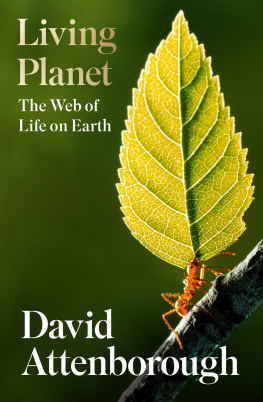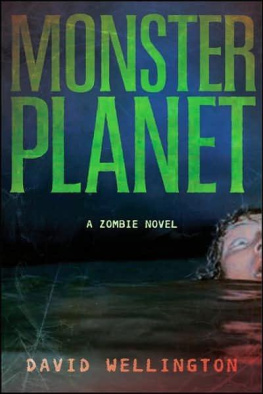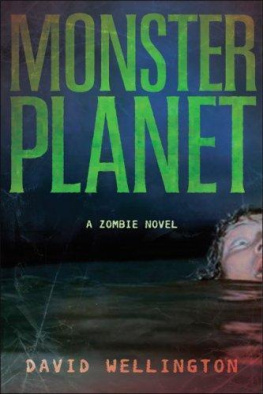David Waltham - Lucky Planet
Here you can read online David Waltham - Lucky Planet full text of the book (entire story) in english for free. Download pdf and epub, get meaning, cover and reviews about this ebook. year: 2014, publisher: Icon Books Ltd, genre: Children. Description of the work, (preface) as well as reviews are available. Best literature library LitArk.com created for fans of good reading and offers a wide selection of genres:
Romance novel
Science fiction
Adventure
Detective
Science
History
Home and family
Prose
Art
Politics
Computer
Non-fiction
Religion
Business
Children
Humor
Choose a favorite category and find really read worthwhile books. Enjoy immersion in the world of imagination, feel the emotions of the characters or learn something new for yourself, make an fascinating discovery.
- Book:Lucky Planet
- Author:
- Publisher:Icon Books Ltd
- Genre:
- Year:2014
- Rating:3 / 5
- Favourites:Add to favourites
- Your mark:
- 60
- 1
- 2
- 3
- 4
- 5
Lucky Planet: summary, description and annotation
We offer to read an annotation, description, summary or preface (depends on what the author of the book "Lucky Planet" wrote himself). If you haven't found the necessary information about the book — write in the comments, we will try to find it.
Lucky Planet — read online for free the complete book (whole text) full work
Below is the text of the book, divided by pages. System saving the place of the last page read, allows you to conveniently read the book "Lucky Planet" online for free, without having to search again every time where you left off. Put a bookmark, and you can go to the page where you finished reading at any time.
Font size:
Interval:
Bookmark:
Praise for Lucky Planet
[Lucky Planet is] a lively and well argued antidote to a widespread view that advanced life could arise frequently and in many places in the known Universe. Waltham explains why the Earth is a much more peculiar planet than you might think, and he shows that its friendliness to life does not just apply to the here-and-now, but must equally have pertained through a history of more than 3.5 billion years: lifes survival and prospering to the point where intelligent life could emerge was a product of extraordinary and exceptional luck. A sceptical response to ideas of inevitable evolution of intelligent beings among the stars, Waltham suggests that we may, after all, be lonelier than we could have thought
Richard Fortey, author of
Survivors and The Hidden Landscape
David Waltham takes us on a delightful tour of the various factors that influence planetary habitability and the evolution of advanced life. That he thinks the prospects for it are unlikely is all the more reason for us to go up to space and take a good look!
James Kasting, Penn State University, author of
How to Find a Habitable Planet
LUCKY PLANET
DAVID WALTHAM
LUCKY PLANET
WHY EARTH IS EXCEPTIONAL AND WHAT THAT MEANS FOR LIFE IN THE UNIVERSE

Published in the UK in 2014 by
Icon Books Ltd, Omnibus Business Centre,
3941 North Road, London N7 9DP
email:
www.iconbooks.net
Sold in the UK, Europe and Asia
by Faber & Faber Ltd, Bloomsbury House,
7477 Great Russell Street,
London WC1B 3DA or their agents
Distributed in the UK, Europe and Asia
by TBS Ltd, TBS Distribution Centre, Colchester Road,
Frating Green, Colchester CO7 7DW
Distributed in Australia and New Zealand by
Allen & Unwin Pty Ltd,
PO Box 8500, 83 Alexander Street,
Crows Nest, NSW 2065
Distributed in South Africa by
Jonathan Ball, Office B4, The District,
41 Sir Lowry Road, Woodstock 7925
Distributed in India by
Penguin Books India,
11 Community Centre, Panchsheel Park,
New Delhi 110017
ISBN: 978-184831-656-0
Text copyright 2014 David Waltham
The author has asserted his moral rights.
No part of this book may be reproduced in any form, or by any
means, without prior permission in writing from the publisher.
Typeset in ITC Galliard by Marie Doherty
Printed and bound in the UK by Clays Ltd, St Ives plc
About the author
David Waltham obtained a first-class degree and a PhD in Physics before moving into the oil industry in the early 1980s. This industrial experience led to his appointment, in 1986, as a lecturer at Royal Holloway, University of London, where he became Head of Earth Sciences from 20082012.
Prologue: A Tale of Two Planets
F ar beyond the range of any telescope humanity will ever possess lies the doomed planet Nemesis. Nemesis, a near-twin to our own world, is named after the ancient Greek goddess responsible for the rebalancing of undeserved good fortune. As befits this name, Nemesis has been on a lucky roll far longer than any world could reasonably expect, but her streak of good fortune has come to an end.
Nemesis is dying. The immense herds that once swarmed across her vast plains are gone for ever. The huge beasts that swam her clear blue ocean waters are now extinct, and the previously verdant rainforests of her equatorial regions have withered and died. A beautiful and complex biosphere has vanished, leaving bacteria and a few species of worm as meagre representatives of the multifarious life-forms that once made Nemesis the biological pinnacle of her galaxy.
When Nemesis first formed she was a duplicate of the early Earth in almost every way. Most of her subsequent history, too, was strikingly similar to that of our own planet. Both of these initially sterile, over-heated hell-holes transformed into vibrant, microbe-infested globes within a few hundred million years of their births. Single-celled plants arose on both worlds within 2 billion years, giving them oxygen-rich atmospheres just as they reached their 3-billionth birthday. Breathable atmospheres in turn allowed large plants and animals to appear when Nemesis and Earth reached about 4 billion years of age. By middle-age, at 4.5 billion years, ferocious monsters stalked both worlds. Had they known it, the Earth-dinosaurs and Nemesis-dragons could have been proud of their status as the most complex organisms in their respective galaxies. Then disasters struck both planets. Only one world recovered.
The first indications of trouble on Nemesis were subtle; storms became a little bigger, droughts slightly longer and winters marginally colder. Animals and plants adapted to the changes and continued to prosper. Bit by bit, conditions worsened. During the most extreme periods the entire planet switched from stiflingly hot desert to frigid polar wasteland and back every few hundred thousand years while, at other times, much of Nemesis spent months in frozen darkness followed by months of continuous, blazing sunlight. The climate occasionally stabilised to give life a respite but, after a few tens of thousands of years, it became erratic once more and intolerable for many organisms. Eventually, plants could no longer evolve fast enough to keep up and when the plants died, so did the animals. Extinction outpaced species creation, and within a few million years of the start of the troubles, only the most robust organisms clung to life.
Earth too endured a dangerously variable climate at this time. Sulphur dioxide clouds, the result of intense volcanic eruptions, reflected sunlight into space to produce severely cold decades. When the clouds cleared, equally unforgiving hot periods followed, produced by greenhouse gases blasted into the air by those same volcanoes. And, just when it seemed that things could get no worse, Earth was hit by an asteroid. The climatic consequences of this impact proved to be the final straw for millions of struggling species; many, including the dinosaurs, died out. Yet this is where Earths fate finally diverged from that of Nemesis. The climate chaos calmed down and Earths biosphere began its slow journey back to full health. Our ecosystem took 10 million years to recover but new life-forms slowly emerged to repopulate a changed yet still vibrant world; a world that went on to produce Homo sapiens, 65 million years later.
How did two worlds enjoy billions of years of exuberant, parallel development and then eventually experience such dramatically different outcomes? There are many ways of getting a world wrong but few ways of getting it right. Nemesis stands for all the myriad failed worlds in the Universe, just one example of how not to build a habitable planet. Yet her difference from our own world is tiny, as well see in the pages of this book. In contrast, Earth has been blessed with incredible good fortune, giving it all the right properties to sustain a complex and beautiful biosphere. It may just be the luckiest planet in the visible Universe.
Almost Too Good To Be True
T he Earth is a precious jewel in space possessing a rare combination of qualities that happen to make it almost perfect for life. Lucky Planet investigates the idea that good fortune, infrequently repeated elsewhere in the Universe, played a significant role in allowing the long-term life-friendliness of our home and shows why it is unlikely we will succeed in finding similarly complex life elsewhere in the Universe.
The proposition that the Earth may be an oddball, a planet quite unlike any other we will ever find, has been discussed for centuries. Until recently such debates were built upon mere speculation, but times are changing. We now sit at one of those scientific crossroads where a field of study moves from being a disreputable, if interesting, subject for discussion to a real science with defendable conclusions based on substantial evidence. Such transitions occur when technological advances make previously impossible observations routine and, as a result, new data becomes available.
Next pageFont size:
Interval:
Bookmark:
Similar books «Lucky Planet»
Look at similar books to Lucky Planet. We have selected literature similar in name and meaning in the hope of providing readers with more options to find new, interesting, not yet read works.
Discussion, reviews of the book Lucky Planet and just readers' own opinions. Leave your comments, write what you think about the work, its meaning or the main characters. Specify what exactly you liked and what you didn't like, and why you think so.










